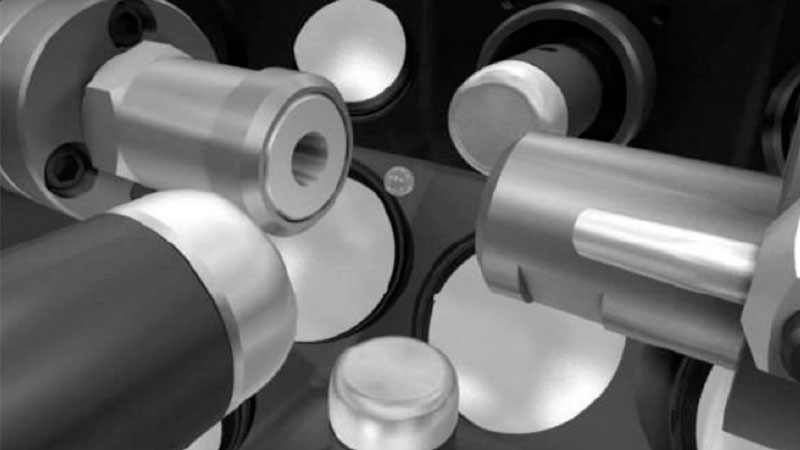Stay Up to Date
Submit your email address to receive the latest industry and Aerospace America news.
The Microgravity and Space Processes Technical Committee encourages the advancement and public awareness of low-gravity studies in physics, materials, biological sciences and related fields.
The Electrostatic Levitation Furnace (ELF) launched last year by the Japan Aerospace Exploration Agency is designed to measure the thermophysical properties of metal oxides, levitate materials and hold its position with three-axis Coulomb force. Microgravity enables high-quality thermophysical property measurements for properties and materials that are sensitive to gravity-driven phenomena such as buoyancy-driven fluid flows and sedimentation. Electrostatic levitation in space offers very quiescent and very well-controlled fluid flow, which is required for precise measurements of thermophysical properties. Furthermore, the environment of ELF allows for a high degree of control over transport processes that cannot be achieved on earth.
Research on the ELF has continued throughout 2016. NASA selected four U.S. investigators to utilize ELF for thermophysical properties experiments. Topics range from novel methods to measure interfacial tension to the measurement of thermophysical properties of metal oxides and photorefractive materials, as well as studies of how to get the best properties from levitation, both on ground and in space.
Experiments on the European Space Agency’s Materials Science Laboratory Electromagnetic Levitator (MSL-EML) have been underway since April 2015. There are three U.S. investigators who are part of the agency’s topical teams with experiments on the MSL-EML. Those experiments are split into batches of 18 samples.
Samples processed so far include Vitreloy 106a (Vit106a), iron-chromium-nickel (FeCrNi), zirconium (Zr), Copper-cobalt (CuCo) alloys, an iron-cobalt (FeCo) alloy, and a nickel-tantalum alloy with added tantalum oxide (NiTa+Ta2O5). Vit106a is a zirconium-based bulk metallic glass-forming alloy with very interesting properties. Iron-chromium-nickel (FeCrNi) is an alloy that is similar to some stainless steels. Zirconium is used as a reference material. The copper-cobalt alloys are being studied to investigate undercooling and demixing, and surface tension and interfacial tension of these immiscible alloys. The FeCo alloy allows studies of double recalescence and metastable states. Many of these samples will continue to be processed in Batch 1.2c, plus a new class of nickel-based super alloys will also be processed in Batch 1.2c.
Electromagnetic levitation on ground has high stirring. This is reduced in space but still there. By performing experiments in space and on ground, scientists can study the effects of flow velocity on nucleation.
Understanding how fire spreads in a microgravity environment is critical to the safety of astronauts who live and work in space. And while NASA has conducted studies aboard the space shuttle and International Space Station, risks to the crew have forced these experiments to be limited in size and scope. The first spacecraft fire experiment, called Saffire-I, was conducted June 14-19 in Orbital ATK’s Cygnus vehicle to investigate large-scale flame spread and material flammability limits in long-duration microgravity. Although the fire was contained in the Saffire module, the experiment used the entire pressurized volume as the test atmosphere. This novel use of ISS cargo vehicles demonstrated a new capability for experimentation and revealed significant effects of both sample and test chamber size on material flammability.
A new era in physical sciences research in spaceflight began this year in April and June with Blue Origin’s third and fourth flights of its New Shepard rocket. The flights, using the same booster and capsule, carried several “Pathfinder” science payloads from researchers in the U.S. and Germany. Because of these flights, commercial, reusable, suborbital rocket flights for research are now available to researchers to purchase. ★
Stay Up to Date
Submit your email address to receive the latest industry and Aerospace America news.




